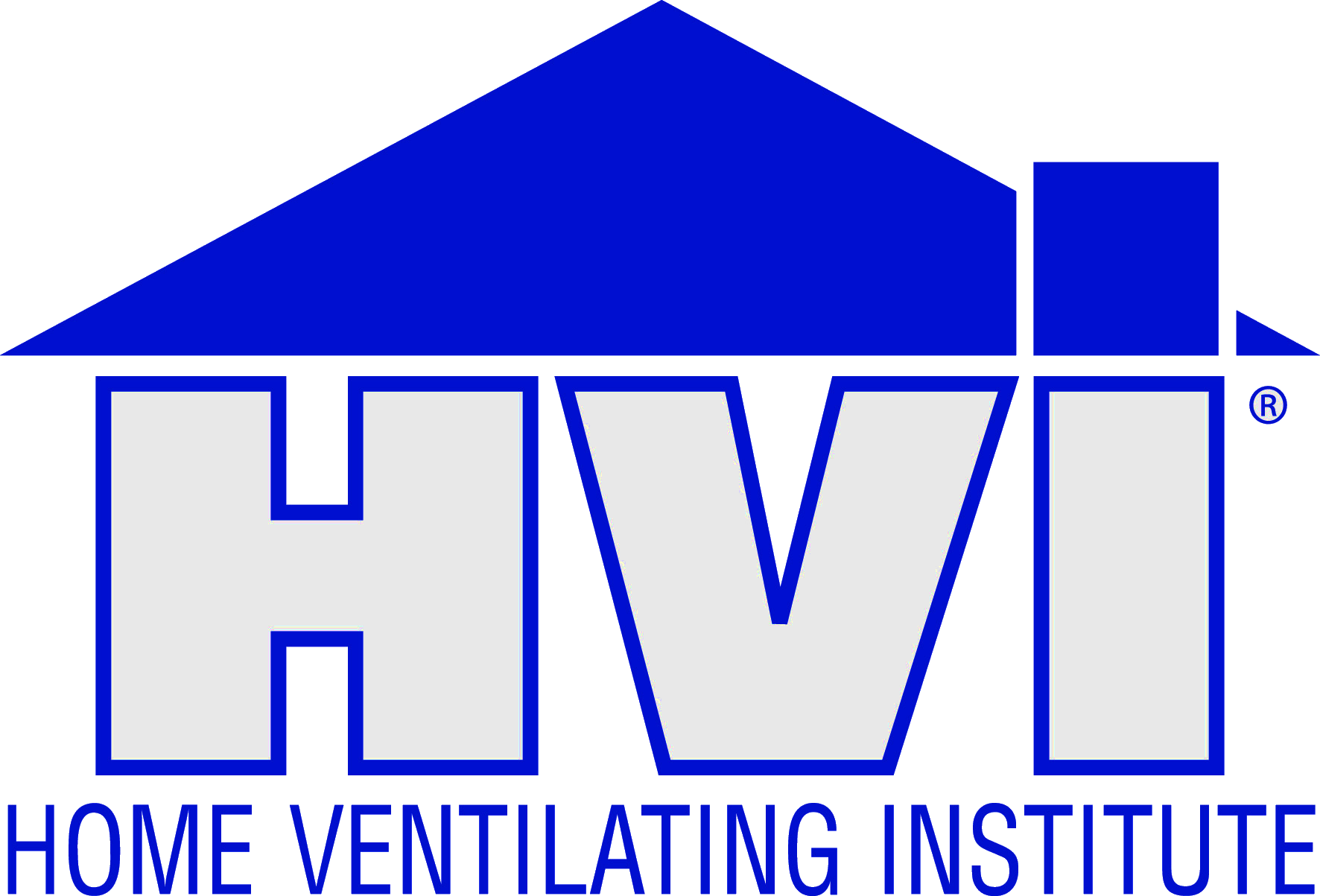Ep213: Proof
Episode 213: PROOF
The Lunsfords set out to build a high performance home for their family, but did they achieve perfect tuning? Watch them test each facet of their home’s control over heat bleed, airflows/pressures, moisture, and contaminants. Take the final tour of interior furnishings, lighting, and finishes and see what a high performance house looks like, above and below the hood.
Featuring affordable housing expert Thom Phillips, home chemical expert Alice Delia, high performance builder Matt Risinger, atmospheric chemist Delphine Farmer, and environmental engineer Marina Vance. Products featured include Kichler lighting systems, Fanimation ceiling fans, and all kinds of test instruments from TruTech Tools.
DIVE DEEPER WITH THESE RESOURCES:
TRANSCRIPT:
Coming up on Home Diagnosis...
Now that we are living in this home with three kids...
Are we ready to complete the science and test our work?
Yes, please.
When we talk about home performance, there is one thing that nobody's talking about.
There is no reason why we can't do this throughout the home improvement and construction industry.
Home Diagnosis is made possible by support from the Alfred P. Sloan Foundation,
by Fantech, 'Breathe easy,'
by Broan-NuTone, 'Come home to fresh air,'
by Aprilaire, 'Everyone deserves healthy air,'
by AirCycler, Retrotec, and Santa Fe Dehumidifiers,
by generous support from these underwriters
and by viewers like you.
Welcome back to Home Diagnosis and the end of this adventure building our house.
Yes, we're finally done, and it's especially satisfying to be living in something bigger than 200 square feet because we're now outnumbered by our children.
This is Lucian, which means light, and this house is certainly full of light and love.
We designed this home to demonstrate many of the scientific concepts we focus on in this show. Today, we're going to prove our designs work with the testing techniques we love so much.
Let's find out if this house actually does what we built it to do.
They say home is where the heart is.
And we certainly put our heart into building our first house. So how hard could it be to build another one?
I'm Grace.
And I'm Corbett.
And our TinyLab, we helped homeowners gain control of their homes through scientific testing. Now, as we build our forever home, we're testing ourselves.
Even though we know a few things about the invisible dynamics of homes, we're teaming up with scientists and building experts to design and build a perfectly tuned home for our family.
The physics, chemistry and microbiology of a home might seem mysterious, but it doesn't need to be.
While this is a personal story full of twists and turns...
It's also the story of the science of homes.
Join us to unlock the mysterious science of your home, too.
One reason that performance is not part of mainstream construction and home improvements yet is that our expectations as homeowners are incredibly...
Low, abysmally low.
If the contractor calls you back at all, shows up on time, and gets you that bid tonight like they promised you, it's a miracle.
So let's reset our expectations with a restaurant analogy.
Now this is a nice restaurant, the kind of place that you would take your spouse on an anniversary.
You sit down, and you're brought a plate of food that is late, or cold, or not what you ordered, or it has a hair in it.
You have very clear expectations for what happens next.
You send it back.
And then?
You get what you actually ordered.
Then who comes to your table?
The manager.
And then?
You get a present.
Of some kind. This is very clear. We all know what to expect in a nice place.
All we have to do is take expectations like that and make them very clear within the contracts of our home improvement projects and our construction projects.
Now there is a flip side to this. If I'm going to walk in and have very clear expectations for my contractor, then I would also not walk into a restaurant, in the same analogy, and sit down and look at the menu and say 'This steak is $40.'
'Can I get it for $32?'
If you ask for discounts from your contractors, they're going to try and find a way to be cheap right back with you, and that shoots the whole performance conversation right in the foot.
There's another thing about restaurants that's fantastic when we talk about performance.
Is the grade. We're always looking for the grade, whether it's in a fast food restaurant or a fine dining.
You look behind the bar to see that 100 number from public health.
And that number is based on metrics. That is testing the temperature of the frying oils, the temperatures of the freezers and the refrigerators, the ventilation inspections.
All this stuff is performance tested on restaurants, and it is published on your Department of Public Health website for anyone to find out.
And so if we can do this in restaurants, there is no reason why we can't do this throughout the home improvement and construction industry.
I think when we talk about home performance, there is one thing that nobody's talking about. We can build a super high performance house, right?
We can get the energy efficiency just nailed, the cost effectiveness, we've got that all figured out.
What nobody's talking about is that, you know, we think about the lifecycle of the materials, the lifecycle of the house. And we don't think about the lifecycle of the occupants.
We should be building homes that are usable by anybody, but they're not. Our homes are usable by able bodied bipeds.
My mother in law had a foot amputated. We couldn't bring her in our house.
She was in a wheelchair. Even if we got her in, we didn't have a bathroom she could use.
If she wanted to stay the night, we didn't have any where she could sleep on the main floor.
There's just a few very basic principles that people need to think about.
The very first is getting inside. It doesn't have to be the front entrance. It's nice if it is.
Once inside the house, you need hallways that are wide enough for somebody to be able to move if they have a assistive device like a wheelchair or a walker.
And then your doorways need to be wide enough. A 3 foot doorway is pretty standard. They don't cost any more money than a 2 foot 8 door really any more.
You need some 30 by 48 inch clear floor spaces in front of the toilet, next to the toilet if you can get it, in front of the sink.
36" by 60" in front of the bathtub. Clear floor spaces in front of your kitchen sink, your stove, your refrigerator.
There's just not enough people working on that, and it's actually so easy once you understand it. It's just it's just so absurd.
But again, you're asking people to do things differently, and that's asking the world.
We really loved all the things Thom had to recommend, so we built in his recommendations here, so this home can truly be our forever home.
As you move into the finish stage of construction and we start covering up all of the layers that we've been so exhaustively designing and talking about and then installing, you start learning a whole bunch of new lessons, and one of them is this idea of 'readiness.'
So you can have a house that's solar ready, meaning it's pre-plumbed. They put the pipes in, they've got the electrical wiring, in case you ever wanted it.
So that's one of the reasons we designed the entire conditioned crawl space into our house. We've got this four foot tall space that's for just being ready for whatever.
And by the way, you can do this readiness concept with smaller homes. The TinyLab has walls that are removable.
You can unscrew the walls and take off the panels, and I can get in there and do things to the electrical system or the plumbing, if I needed to.
You know, you like to think, 'Oh, this is going to be our forever home. I'm never going to touch it again. I'm never gonna have to do any work to it.' Obviously, that's a fallacy.
People will spit on your floor. Don't let them- don't let that hurt your feelings.
But if you have your heart set on something, you hold on to your guns, you be decisive about it.
I really did not want my parents, who are going to age and hopefully come and continue to visit grandchildren, having to step over into a bathtub to shower.
But I also have little kids who love a bath, so I wasn't going to destroy it. I was going to make both of them work.
With a toilet in there, too.
They're both a little bit smaller, but I had so many people try to talk me out of it. 'Don't do that. Don't do this. Don't do that.'
But I knew it could work and it did work, and I'm so glad that we did it.
Science is wonderful, and there are a lot of really interesting new scientific materials that are being made every day in the building industry.
Some of which are going to be really awesome. But they're also going to be really hard to get a hold of.
Even if you can get a hold of them, if it's the first time that you have ever worked with that, there is a huge learning curve.
Which is part of the reason why builders don't really want to experiment with stuff because they know- I try some new things, even if it seems like it's a great idea and it's foolproof or the marketing says 'everything is good about this, there's nothing bad.'
They know it's going to cost them at least half a day for their crew to learn this thing.
A lot of these things, we just can't even predict, which is why we test to make sure it's actually doing what it's supposed to do.
To quickly sum up the entire science of a home, we examine the interactions of the four elements: heat bleed, air flow and pressure, moisture, and air quality.
Then make our three recommendations to tune the air tightness, insulation and mechanicals.
On the two critical systems of the home: skin and circulatory.
And the one goal is control. We also like to call this 'tuning' or 'balance', but the only way to prove you have achieved it is with testing.
Same as with a baby. When a baby is born, if it looks cute, aw, that's so cool. But of course, we test the baby's responsiveness, its breathing, its pulse rate and blood oxygen level to make sure everything's working as designed.
Yes, testing is the most important feature of building for performance and health.
If you can describe exactly what you want to know, you can find or devise a way to test it.
If you look at it this way, you can test literally anything invisible about a home.
Yeah, but a simpler way to look at it is that any test targets at least one of the four elements: heat bleed, airflow and pressure, moisture, or air quality. And some of these tools measure more than one element.
Hypothesis is great, but proof is better. Are we ready to complete the science test our work?
Yes, please. When a house gets a full scope performance test between the enclosure (the skin) and the engines (circulatory system), the one that always wins is the enclosure. So let's tackle that first.
We start with the most important tool in the kit: the blower door.
This is the blood pressure cuff for a house, and it tells you so much about your home.
But before we fire it up, we always run a quick thermal scan to see any subtle anomalies before they're drowned out by the effects of this giant fan.
Corbett's looking for insulation problems, possible moisture issues or leaks, and ducts in the outside walls, which means no insulation in that spot.
We're literally one minute into testing this home, and we're faced with a radical truth about tools. Which is that they're only as good as your technique when using them.
This camera is amazing, but it is an idiot. It'll try hard to show me pretty colors all the time, regardless of what they mean.
Yeah, even though today we have all these brilliant tools, you still have to practice with them to develop a craft if you're going to get the most out of them.
OK, now we're ready to run the blower door. Remember, in episode 5, we got 310 CFM50 at the rough stage of construction.
And it looks like we got actually about 10% tighter, and I'm pretty happy about that.
All of the openings in the house, if we were to add up all the gaps and cracks, are probably about as big as this window here.
So while this blower door is very much like the blood pressure cuff, we're going to take this house to the doctor now and do all of the vitals checks, which are...
In a zonal pressure test, we use a manometer and a hose to test all of the rooms.
Because now that we know that there's a 4 by 8 inch square hole in our house, we want to make sure that that hole is not confined to just one room.
And we want to make sure that the number is around zero. So the number is not zero, but it's 2- and that is much closer to zero than it is to 50.
So if I had to put a percentage, it's about a 4% connection to the outside.
This is the hatch that goes down into our crawlspace. And we actually designed our crawlspace to be 100% inside the house.
So using this little test port, I'm going to see if this has the same number as the girls' room. And it does.
Recessed can lighting is usually a big cause of air leakage in homes.
Now, we have lights that look like recessed cans, but they're not. But they are still penetrating the ceilings.
So I'm going to test these lights along with some outlets on exterior walls with a pressure pan, which is basically a zonal pressure test for things that don't have doors.
Now that we're done testing the enclosure, it's time to test the HVAC.
And this little beauty is a training tool that really helps you understand the complex, but not so complex way to test an HVAC system.
When you look at it simply, what we're doing in the crawl space is we've got the air coming in, gets filtered, gets conditioned by our heat pump down there and then goes into all of the network of octopus ducts that are the main trunk line and the branch lines that come out of that to go into each of our rooms.
First thing that we want to know is: is the blood pressure in our system what we designed it to be? Meaning, not too high so that our system has a heart attack.
You can simply insert your static pressure probes before and after the heat pump down there.
Then we can move further out and do what's called a static pressure map to know everything about the pressure in our system.
We can also test the air flows coming out of each of the registers in the girls room, and in our bedroom, and in the living room.
And if we want to be really crazy about it, we can even go so far as to test the delivered conditioning capacity.
That means the actual Btus coming out of each of our registers, and compare that to the design calculations that we did in the beginning with our Manual J.
You can know everything, and it kind of depends on how serious you want to be about getting it perfectly right or if you want to build a pretty good house and get it in the neighborhood.
I will tell you that you can go too far with this testing, so knowing that everything is working to your standards is what you're going for.
Testing tools like this and large training props... well, you don't need to know how to do them yourself, but you definitely can find professionals out there who do know how to use them.
So the ducted heating and cooling system we have the filter for right here. You can hear that it's running.
And we want to know, big picture, what the whole system is pushing, airflow-wise.
There are multiple ways to test system airflow. Some of them are sexier and easier than others.
You want to know this because if we don't know how much air is running through the system, then we have no way of diagnosing anything about it at all.
So we are now measuring the airflow. I've got some tools in the crawl space right now. This thing is also wireless.
And it looks like we have 855 CFM. You can see that we are basically exactly where we're supposed to be.
Now, just because the HVAC system right now is working perfectly as designed doesn't mean it's always going to be that way.
We need to replace filters, and I waited until this thing was nice and juicy so that I could show you guys.
This is a used filter, right? That color should be like this.
We've got so much filtration in this house.
We have six places where filters need to be replaced, and that is 13 total filters in this house that I am in charge of checking and replacing.
Some of them only need to be replaced once a year.
This is money well spent. If this stuff is in the filter, it is not in my children's lungs.
Now, of course, the enclosure and the engines have to be tuned themselves, but they also need to be tuned together.
Which is really important in a high performance home like this one.
So what we want to do next is measure the pressure inside with reference to outside, with our pressure gauge. You see, the other end of this hose is outside.
When we're at rest, all the windows and doors are shut to outside and there is no fan working in the house, the house should be no different than outside, pressure-wise.
When you start turning on the HVAC equipment, that's when you start to learn things.
So this is the pressure when the ERV is kicked on. That's our balanced ventilation.
I want my balanced ventilation to truly balance my home.
So all I need to do is go down there and tweak a setting on the air systems to make sure that they are in fact bringing in as much air as they're sending out.
So once we have fixed this and made this zero, then we also want to know what the one way exhaust systems in this house are going to do.
The only one way fan in this house, aside from the radon fan, which is sucking on the ground underneath the house, is this kitchen exhaust hood right here.
I just kicked the kitchen exhaust fan up to its maximum speed, which is about 600 CFM. You can see why makeup air is so important in an air tight house like this.
Now, if we did not have the makeup air system, this fan alone would be enough to do about three blower door tests at the same time on this house.
And we use this, of course, every single time we cook, even making a piece of toast.
So this tells me that my family is going to be safe and that the house pressures are not going to start getting really wacky and doing strange things to the system of home performance.
So you build your house, it's a brand new house, and then you come in with your partner and your kids and your dogs and your plants.
And you start cooking in there, and you start living in it, and your house becomes a home.
It becomes a microbiome on its own.
You might think of a building as being an isolated planet or its own island.
But what happens when once you've built that building is that you start to come in and occupy it and you bring with you all your own microbes and you start to change that entire that internal ecosystem of the building.
And you bring in your microbes and you bring in your chemicals, and that changes and really turns that building into your own home and your own ecosystem.
People will say, 'Oh, I want to get, you know, zero VOCs or zero chemicals' or something like that. And it just doesn't exist.
From that perspective, yes, this is actually really, really good because the building itself has a very, very low footprint.
I wouldn't be surprised if you were 2000 to 3000. That would be kind of more my expectation for a relatively new house.
This looks like a 30 or 40 year old house from that perspective.
The building side- you have new materials, doesn't matter what they are, whether it's a natural thing or a synthetic or whatever.
You typically start off with really high levels because you basically unwrapped the packaging and stuck it in the house, right?
So here we are at a year, and you're definitely on that, you know, that leveled-off where you're at a fairly continuous, but small, emissions from all of the materials that make up the house.
There was a formaldehyde test in here, which was on kind of the low side of typical, with as much wood as you might have there.
Formaldehyde is produced by wood naturally, so no matter what you do, you can't get really, really low formaldehyde.
If you've got wood anywhere, which at least in the U.S., all of the substructures and the framing are typically wood, at least for homes.
For a fairly new house, you might see double the formaldehyde that we saw in these samples here.
So that would indicate to me it's something that's aged, because it doesn't have that high signature.
All of the engines of home performance that move heat and air around in our house hide what they are and how they are working, except for one.
What I love about our ceiling fans is that they don't just not hide what they are.
They actually try to make the mechanics of moving air beautiful.
And we keep ours running on low speed almost all the time because frankly, they are an integral part of our home's circulation system.
Because our home is so efficient, airtight and insulated, the machines that ventilate and heat and cool the house are also very modestly sized.
And so these become very important for moving the air around. They're also highly efficient, which is important when you're talking about electronic devices.
These can move 10,000 CFM- many times more than the all the other engines in the house combined- and they only use about 30 watts if they're doing that.
We very rarely have them turned up too high, but that is nice to know.
My favorite part, though, is still that I can see the invisible dynamics of home performance at work in front of me all the time.
Of course, to see anything clearly in a home at all, you need lights. Lighting is part of the system of the home too, so we dug into how to design a system of layered lighting.
We learned that any light serves one of these three layers: ambient task or accent, and we tried to design at least two out of the three into our rooms.
You generally want to illuminate the corners of a room with ambient lighting to define the space. We used highly efficient LED lights for most of that, and they're very easy to install, as you can see.
LEDs don't put off much heat, either, unlike other types, and the technology has come light years since candles and chandeliers.
There are engineering tables that tell you the minimum foot-candles needed for any type of space.
That target number and the square footage of the room will tell you how many lumens you'll need.
Then pick the light fixtures and the bulbs to add up the lumens. Good lighting can turn your home into a work of art.
Throughout this season of our show, we've tried to be pretty specific about the details of our home build.
But thinking in terms of any particular building technique or type of product outside the system of a home can take you down the wrong path.
We believe there are no blanket prescriptions for home performance.
Yeah, the home you're living in, or dreaming of, is a system of its own and will be unique among homes.
And unique doesn't just mean special. It literally means the only one of its kind.
The physical home, plus the chemistry and microbiology within its walls, and in the bodies of your family, is as one of a kind as a fingerprint.
So avoid the trap of trying to borrow partial ideas when it comes to the science of homes.
Just because any one of our systems works in this case in Atlanta for our family doesn't mean it'll cooperate with the rest of the dynamics around you somewhere else.
There are no prescriptions that can make all homes healthier or better for all people, no matter what the marketing says.
Thinking scientifically about your home, and then testing it, is the only way to get this right.
When we started building our TinyLab, I was five months pregnant with my first baby.
Now, as I stand in our completed home, having recently given birth to our third and last baby, I'm kind of speechless.
It's been a long process of creating homes, babies and TV shows for me.
My body is tired. My heart is overflowing.
And I hear a little voice deep inside me that says, 'Be still.'
The thing that can be so good about the science of building homes, babies, gardens, and lives is that you can try to predict and prevent problems.
But life has a way of still catching you off guard.
Rain delays, material constraints, design changes, financial overages, global pandemics and unpredictable birth plans.
I've learned you can't do it alone. You have to be patient.
And asking for help, which sometimes may feel really hard, can be absolutely lifesaving.
Now that we are living in this home with three kids and with dreams of living here forever, we know this house will change.
The kids all share a room now, but those teenage years- that'll probably change.
This house is a full nest. But one day will be empty.
Change is reliable. Babies grow up. Seasons go by.
And maybe the voice in my heart trying to tell me to 'be still' is also reminding me to be flexible.
It's the right thing to do. We should all be building better.
So let's build a better, more durable, more long lasting house that's going to be comfortable and really healthy to live in. And my family can be really happy in it.
And so if we continue to talk about that, I think that we will change the conversation and more and more people will come to builders across the nation and say, 'I really want a well-built house that's comfortable and that's going to have these qualities.'
'How about we do that together?' And that will change the way we do things in America.
Now that we've deeply explored building a house from the ground up to do exactly what you want, we're going to turn the lens on what happens when we ignore this science and disaster strikes.
What happens when your home is flooded?
How do hurricanes, smoke damage, and other disasters affect a home's, physics, chemistry and microbiology, and that of the people living inside of it?
As the world continues to change, so do the needs of homes. And Home Diagnosis will continue to explore this changing science, and seek out answers, for viewers like you.
Thank you for coming along on this journey with our family.
We'll see you next time.
First hilarious moment of the day, and we're just grabbing a snack.
Camera operators, host of the show, because the entire shoot is being held up by an infant.
We're all waiting around while a baby eats.
He'll see this sometime- I just want to say you're important. You're important enough to stop this entire shoot.
Home Diagnosis is made possible by support from the Alfred P. Sloan Foundation,
by Fantech, 'Breathe easy,'
by Broan-NuTone, 'Come home to fresh air,'
by Aprilaire, 'Everyone deserves healthy air,'
by AirCycler, Retrotec, and Santa Fe Dehumidifiers,
by generous support from these underwriters
and by viewers like you.

















